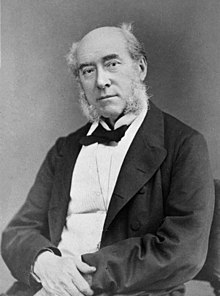
Sir William Fergusson, 1st Baronet FRCS FRS FRSE (20 March 1808 –10 February 1877) was a Scottish surgeon.

Sir William Fergusson, 1st Baronet FRCS FRS FRSE (20 March 1808 –10 February 1877) was a Scottish surgeon.
William Fergusson son of James Fergusson of Lochmaben, Dumfriesshire, was born at Prestonpans, East Lothian on 20 March 1808, and was educated first at Lochmaben and afterwards at the high school and University of Edinburgh. At the age of fifteen he was placed by his own desire in a lawyer's office, but the work proved uncongenial, and at seventeen he exchanged law for medicine, in accordance with his father's original wishes. He became an assiduous pupil of Dr. Robert Knox the anatomist, who was much pleased with a piece of mechanism which Fergusson constructed, and appointed him at the age of twenty demonstrator to his class of four hundred pupils. [1]
In 1828 Fergusson became a licentiate, and in 1829 a fellow of the Edinburgh College of Surgeons. He continued zealous in anatomy, often spending from twelve to sixteen hours a day in the dissecting-room. Two of his preparations, admirably dissected, are still preserved in the museum of the Edinburgh College of Surgeons. Soon after qualifying Fergusson began to deliver a portion of the lectures on general anatomy, in association with Knox, and to demonstrate surgical anatomy. In 1831 he was elected surgeon to the Edinburgh Royal Dispensary, and in that year tied the subclavian artery, which had then been done in Scotland only twice. On 10 October 1833 he married Helen, daughter and heiress of William Ranken of Spittlehaugh, Peeblesshire. This marriage placed him in easy circumstances, but he did not relax his efforts after success in operative surgery, and by 1836, when he was elected surgeon to the Royal Infirmary of Edinburgh and fellow of the Royal Society of Edinburgh, he shared with James Syme the best surgical practice in Scotland. [1]
In 1840 Fergusson accepted the professorship of surgery at King's College London, with the surgeoncy to King's College Hospital, [2] and established himself at Dover Street, Piccadilly, whence he removed in 1847 to 16 George Street, now St George's Street, Hanover Square. He became M.R.C.S. Engl. in 1840, and fellow in 1844. His practice grew rapidly, and the fame of his operative skill brought many students and visitors to King's College Hospital. In 1849 he was appointed surgeon in ordinary to the prince consort, and in 1855 surgeon extraordinary, and in 1867 sergeant-surgeon to the queen.

For many years Fergusson was the leading operator in London. He was elected as president for two years of the Pathological Society of London in 1859. [3] He was elected to the council of the College of Surgeons in 1861, examiner in 1867, and was president of the college in 1870. As professor of human anatomy and surgery he delivered two courses of lectures before the College of Surgeons in 1864 and 1865, which were afterwards published. He was president of the British Medical Association in 1873. In 1875, he received the honorary degree of LL.D. from Edinburgh University. He resigned the professorship of surgery at King's College in 1870, but until his death was clinical professor of surgery and senior surgeon to King's College Hospital. He was also a fellow of the Royal Society. He was created a baronet on 23 January 1866, [4] an honour which led to his receiving a presentation from three hundred old pupils, consisting of a silver dessert service worth £400, at the annual dinner of old King's College men on 21 June 1866. [5]

He died in London after an exhausting illness, of Bright's disease, on 10 February 1877, and was buried at West Linton, Peeblesshire, where his wife had been buried in 1860. [6] [7]
A portrait of Fergusson by Lehmann, painted by subscription, was presented to the London College of Surgeons in 1874, and a replica is in the Edinburgh College of Surgeons. [6]
Fergusson's reputation is that of a brilliant operator and a great "conservative" surgeon. The term conservative surgery, first applied by Fergusson in 1852 to operations for the preservation of parts of the body which would otherwise have been sacrificed, [2] does not denote merely operations which he originated or improved, for James Syme had already been very successful in this line of procedure. But Fergusson extended the principle from the operation of excision of the elbow joint to many others. No portion of the body which could be usefully preserved was too small for him to make efforts to save. Among operations with which his name is specially identified are those for harelip and cleft palate, and operations on the jaws, the excision of joints, notably the hip, knee, and elbow, lithotomy and lithotrity, and amputations of limbs. His skill in dissection, and his careful study of the actions of the muscles which he had to cut through, were of essential importance to his success. In his lectures at the College of Surgeons he was able to speak of three hundred successful operations of his own for harelip. The operation for cleft palate had been largely abandoned till he took it up anew. His manipulative and mechanical skill was shown both in his modes of operating, and in the new instruments he devised. The bulldog forceps, the mouth-gag for cleft palate, and various bent knives attest his ingenuity. A still higher mark of his ability consisted in his perfect planning of every detail of an operation beforehand; no emergency was unprovided for. Thus, when an operation had begun, he proceeded with remarkable speed and silence till the end, himself applying every bandage and plaster, and leaving, as far as possible, no traces of his operation. So silently were most of his operations conducted, that he was often imagined to be on bad terms with his assistants. His punctuality and his hatred of unnecessary waste of time were very marked. [6]
As a lecturer, out of the operating theatre, Fergusson did not shine, owing to his reticence and his imperfect command of abstract subjects; although on points of practice he gave excellent instruction. In the operating theatre his remarks on the cases before him were valuable and instructive. To students he was most kind and generous. He had to sustain much opposition, especially from Syme, but he did not imitate his opponent's mode of controversy; and if on any occasion he imagined he had said or done something to hurt another's feelings, he never rested till he had made reparation in some form. [6]
Fergusson was an excellent carpenter, rivalling skilled artisans. When a student he made himself a brass-bound dissecting case, and in 1834 completed a lithotrite, with a novel rack and pinion, which he used throughout life. He was a good violinist, an expert fly-fisher, and very fond of the drama. His endurance was remarkable; he never seemed tired, and scarcely had a day's illness till attacked by Bright's disease. He was tall, dignified, and of good presence, of genial though keen expression, fond of a joke, and very hospitable. He rendered gratuitous aid to large numbers of clergymen, actors, authors, and governesses. He helped many of his pupils in starting in life, a large number of whom attained eminence as surgeons. He never forgot the face of a pupil. [6]
In some expressions of opinion Fergusson was ill-advised, especially in matters requiring more knowledge of physiology and hygiene than he possessed. His evidence before the royal commission on vivisection, and his relations with homeopathic practitioners, which he was led to modify, are instances of this. But his faults were faults of sympathy, not of self-conceit or intolerance of criticism. [6]
On 10 October 1833, Fergusson married Helen Hamilton Ranken, daughter and heiress of William Ranken of Spittlehaugh, Peeblesshire. They had two sons: Sir James Ranken Fergusson (eldest son and heir) and Charles Hamilton (who would eventually rise to the rank of major in the army), and three daughters. [5]
Fergusson's principal work is his
He also wrote
and the following papers and pamphlets: [8]

Abraham Colles was Professor of Anatomy, Surgery and Physiology at the Royal College of Surgeons in Ireland (RCSI) and the President of RCSI in 1802 and 1830. A prestigious Colles Medal & Travelling Fellowship in Surgery is awarded competitively annually to an Irish surgical trainee embarking on higher specialist training abroad before returning to establish practice in Ireland.
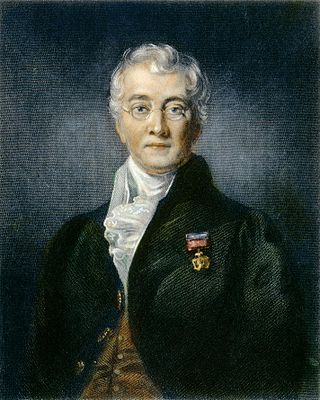
Sir Charles Bell was a Scottish surgeon, anatomist, physiologist, neurologist, artist, and philosophical theologian. He is noted for discovering the difference between sensory nerves and motor nerves in the spinal cord. He is also noted for describing Bell's palsy.

James Syme was a Scottish pioneering surgeon.

Robert Liston was a British surgeon. Liston was noted for his speed and skill in an era prior to anaesthetics, when speed made a difference in terms of pain and survival. He was the first Professor of Clinical Surgery at University College Hospital in London and performed the first public operation utilizing modern anaesthesia in Europe.
Prof John Lizars FRSE was a Scottish surgeon, anatomist and medical author.
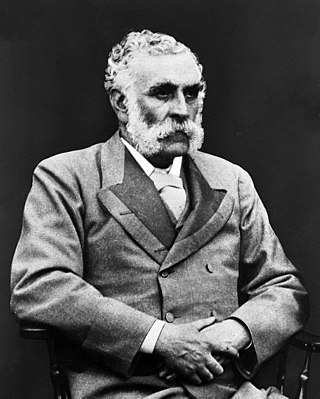
Douglas Moray Cooper Lamb Argyll Robertson FRSE, FRCSEd LLD was a Scottish ophthalmologist and surgeon. He introduced physostigmine into ophthalmic practice and the Argyll Robertson pupil is named after him. He was president of the Royal College of Surgeons of Edinburgh.
The Colyer-Fergusson baronetcy, of Spitalhaugh in the County of Peebles and of George Street in the parish of St George Hanover Square in the County of Middlesex, was a title in the Baronetage of the United Kingdom. It was created on 23 January 1866 for the Scottish surgeon William Fergusson. The second Baronet served as Vice-Lieutenant of Peeblesshire. The third Baronet assumed the additional surname of Colyer in 1890 and served as high sheriff of Kent in 1906. The title became extinct on the death of the fourth Baronet in 2004.

William Coulson was an English surgeon.

Sir Henry Morris, 1st Baronet FRCS was a British medical doctor and surgeon, president of the Royal Society of Medicine and the author and editor of significant works on anatomy. He was also known for his work in the field of cancer.

Sir James Berry FRCS FSA was a Canadian-born British surgeon.
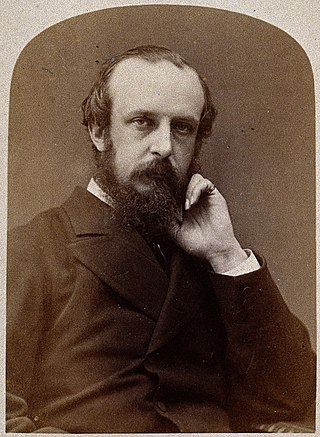
Christopher Heath FRCS was an English anatomist and general surgeon
Hermann F. Sailer is a German maxillofacial surgeon. He leads the Klinik Professor Sailer in Zürich and is the founder of the Cleft-Children International Foundation.

Sir Patrick Heron Watson was an eminent 19th-century Scottish surgeon and pioneer of anaesthetic development. He was associated with a number of surgical innovations including excision of the knee joint, excision of the thyroid and excision of the larynx for malignant disease. He was President of the Royal College of Surgeons of Edinburgh on two occasions, an unusual honour, and was the first President of the Edinburgh Dental Hospital. He was a great advocate of women training in medicine and surgery and did much to advance that cause.
John Stephenson was a Canadian physician and educator, and one of the founders of the Montreal Medical Institution, the first medical school in Canada. He is regarded as one of the founders of McGill University Faculty of Medicine.

John Duncan, LLD FRCSEd FRSE was a Scottish surgeon best known for his surgical teaching at the University of Edinburgh and the Edinburgh Extramural School of Medicine. He was a pioneer of the use of electricity in surgery both for surgical cautery and for tumour necrosis. On the death of his father James Duncan in 1866 he became a director of the major drug manufacturer Duncan Flockhart & Co, which had been founded by his grandfather, also John Duncan. He served as President of the Royal College of Surgeons of Edinburgh 1889 to 1891.

Francis Mitchell Caird FRCSEd was a Scottish surgeon who was an early advocate of Listerian antisepsis and then asepsis. He was a pioneer of gastrointestinal surgery. From 1908 to 1919 he was Regius Professor of Clinical Surgery at the University of Edinburgh and was President of the Royal College of Surgeons of Edinburgh from 1912 to 1914.
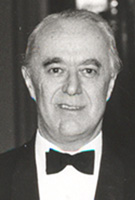
James Johnston Mason Brown OBE, FRCSEd was a Scottish paediatric surgeon. During World War II he served as a surgical specialist with the 8th Army in North Africa and Italy and was awarded the OBE for this service. As surgeon-in-chief at the Royal Hospital for Sick Children in Edinburgh, he edited the major textbook The Surgery of Childhood. He was the joint founder of the Scottish Surgical Paediatric Society and a founder member of the British Association of Paediatric Surgeons (BAPS), of which he became president. He was elected President of the Royal College of Surgeons of Edinburgh (RCSEd) in 1962 but died in office aged 56 years.
Extramural medical education in Edinburgh began over 200 years before the university medical faculty was founded in 1726 and extramural teaching continued thereafter for a further 200 years. Extramural is academic education which is conducted outside a university. In the early 16th century it was under the auspices of the Incorporation of Surgeons of Edinburgh (RCSEd) and continued after the Faculty of Medicine was established by the University of Edinburgh in 1726. Throughout the late 18th and 19th centuries the demand for extramural medical teaching increased as Edinburgh's reputation as a centre for medical education grew. Instruction was carried out by individual teachers, by groups of teachers and, by the end of the 19th century, by private medical schools in the city. Together these comprised the Edinburgh Extramural School of Medicine. From 1896 many of the schools were incorporated into the Medical School of the Royal Colleges of Edinburgh under the aegis of the RCSEd and the Royal College of Physicians of Edinburgh (RCPE) and based at Surgeons' Hall. Extramural undergraduate medical education in Edinburgh stopped in 1948 with the closure of the Royal Colleges' Medical School following the Goodenough Report which recommended that all undergraduate medical education in the UK should be carried out by universities.

Thomas Chevalier, (1767–1824) was an English surgeon and medical writer who rose to become Surgeon Extraordinary to the King and Professor of Anatomy and Surgery to the Royal College of Physicians.
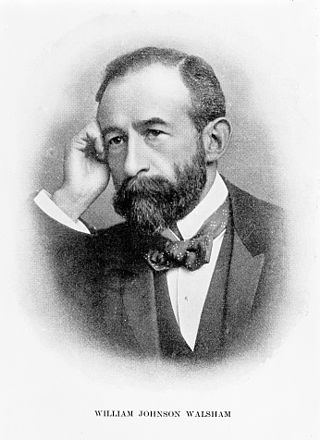
William Johnson Walsham was an English surgeon.
Attribution: